
If you've had a bad experience with deer in your garden, you're not alone. Many gardeners have fallen foul of these inquisitive garden visitors, and lost a few of their favorite plants along the way! And while several plants are listed as deer-proof perennials, you'll often find that if a deer is hungry enough, nothing is off limits.
That said, there are some deer-resistant perennial plants that are less likely to attract Bambi. So if you are looking to create a more deer-resistant garden, this is definitely a checklist you should be considering for your future perennials.
To build the most comprehensive list, I also consulted the work of fellow gardening expert, author, and professional landscape designer, Lee Miller. With over two decades of experience designing client gardens, Miller has a fantastic, field-tested list of plants that deer consistently avoid. I've integrated her top recommendations with my own favorites below.

Choosing the Most Deer-Resistant Plants
Before diving into my recommendations, let's be clear. No plant is completely safe from a hungry deer. Heck, when I’m starving I’ve been known to gobble up some pretty questionable food items – so why wouldn’t a deer?
The other thing is that even if a deer doesn’t eat a particular plant in one person's yard, there's no guarantee the deer will eschew the same plant in someone else's yard.
Still, there are ways to tip the odds in your favor, at least. What you are looking for are more deer-resistant plants. These plants tend to have unpleasant textures like spiny or tough or ones that are highly aromatic.
A couple in this roundup are also deer-resistant flowering shrubs, where height or bulk can restrict access to critical areas. These are pretty good bets if you are looking for the most deer-resistant perennial plants.
Sign up for the Gardening Know How newsletter today and receive a free copy of our e-book "How to Grow Delicious Tomatoes".
1. Ligularia
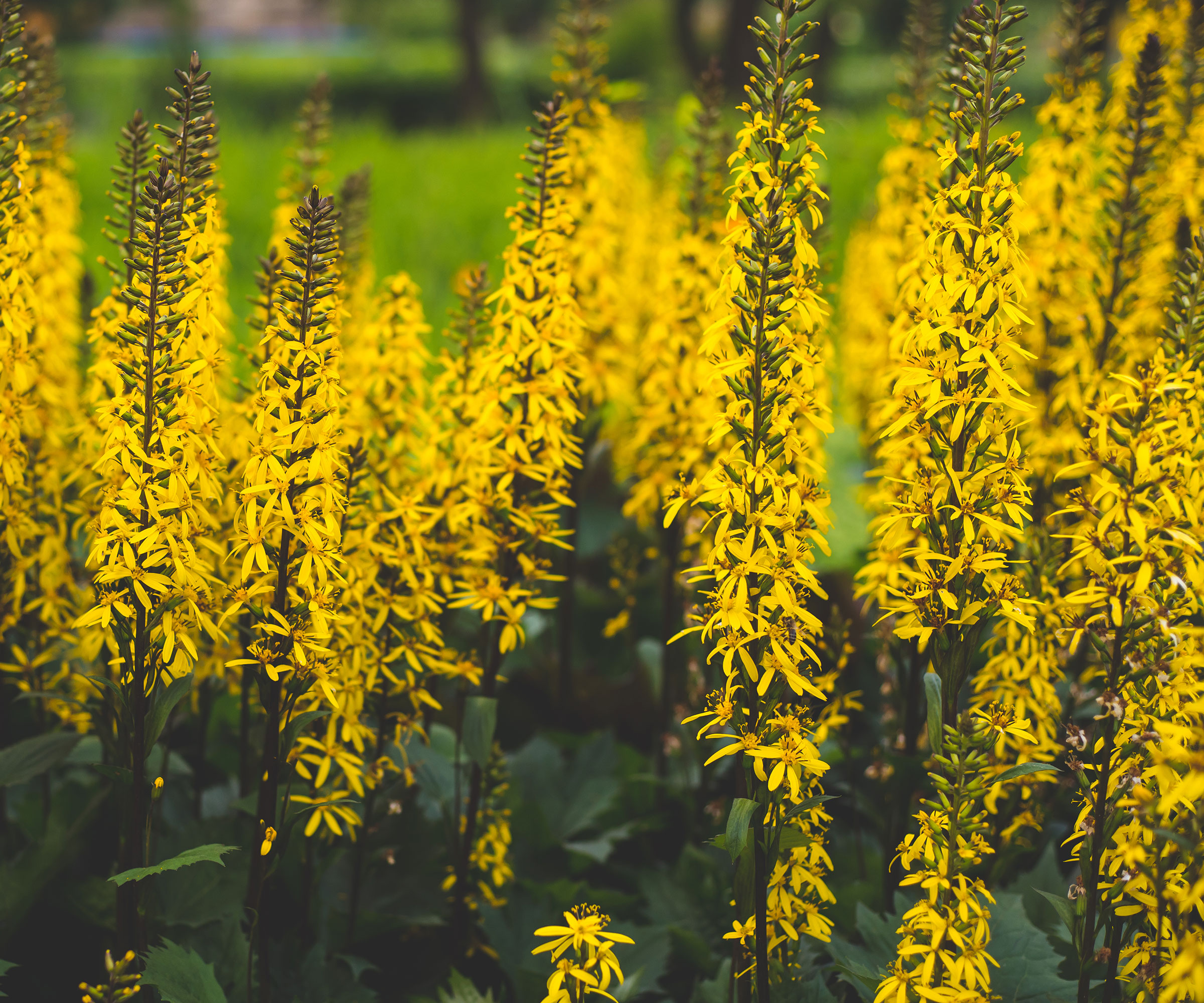
Ligularia, also called leopard plant, is one of my favorite perennials for dappled shade. I have two varieties growing on my covered patio which give the area an exotic (almost tropical) feel, with large, green leaves followed by yellow spires (the Rocket) or even bigger maroon foliage accented by yellow/orange flowers (Britt Marie Crawford).
Deer generally ignore this blooming perennial. However, slugs and snails find it enticing, so you might be swapping one nibbler for another.
Ligularia can be grown in USDA zones 4-8 with moist, well-draining soil. Plant in dappled sun or shade with morning exposure.
2. Pigsqueak
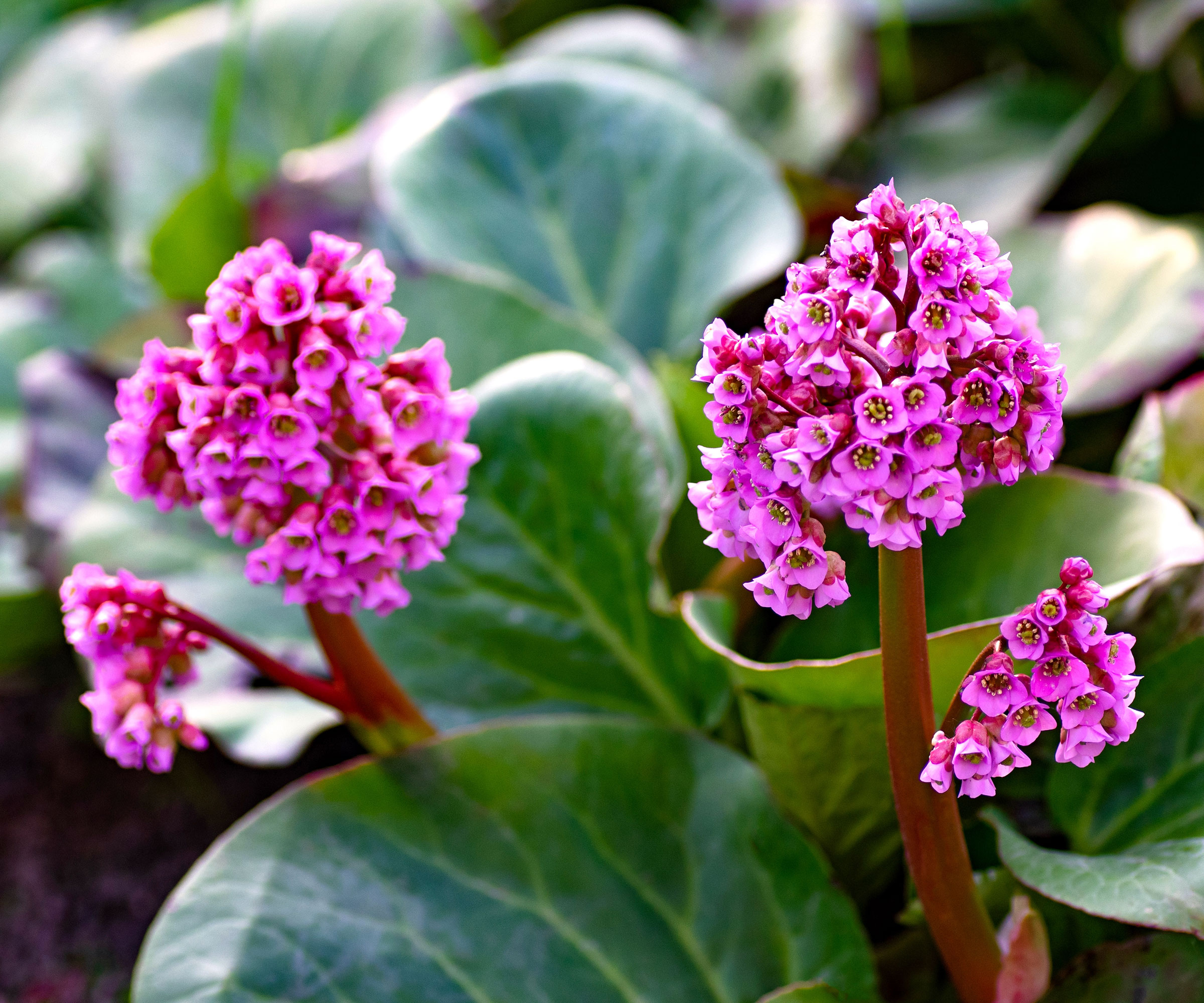
This blooming perennial gets bonus points just for the adorable name. It gets this name from the sound the foliage makes when rubbed between the fingers.
Pigsqueak (bergenia) grows equally well in sun or shade, provided it has rich, moist yet well-draining soil. It can be grown happily in USDA zones 4-9, where its spring blossoms set off by the leathery, glossy green leaves delight the grower almost as much as its name.
3. Hakone
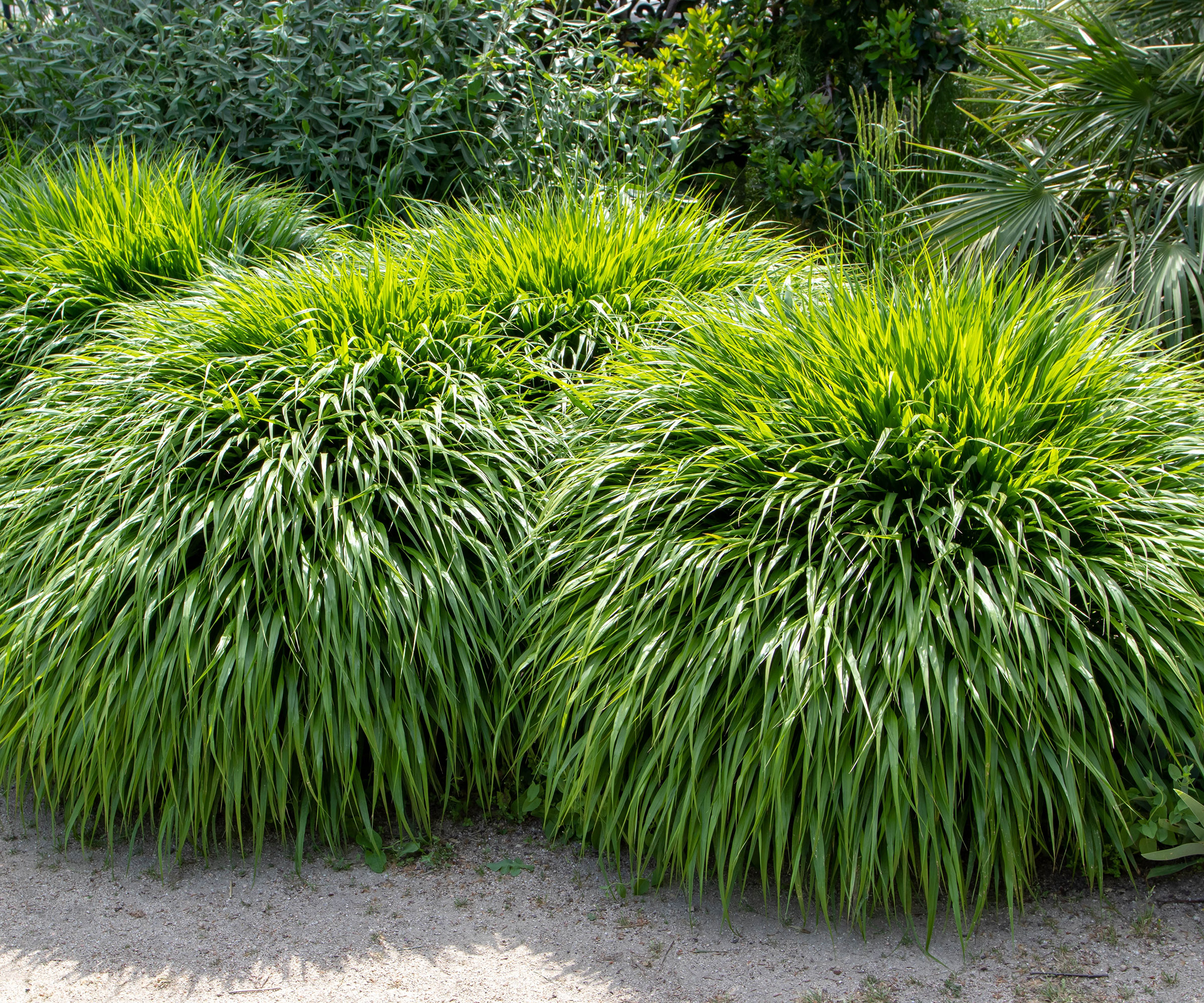
Love the look of grasses, but don’t have the sun exposure for most varieties? Try growing deer-resistant hakone (Hakonechloa macra) grass, which thrives in USDA zone 5 and up.
Also known as Japanese forest grass, this clumping grass thrives in partial shade in low-growing individual mounds. In the genus of bunchgrass, some varieties of hakone have variegated leaves, while others have brilliantly chartreuse blades.
In areas of hot summers, grow them in full shade. Otherwise, this perennial grass requires moist, rich and well-draining soils.
4. Catmint
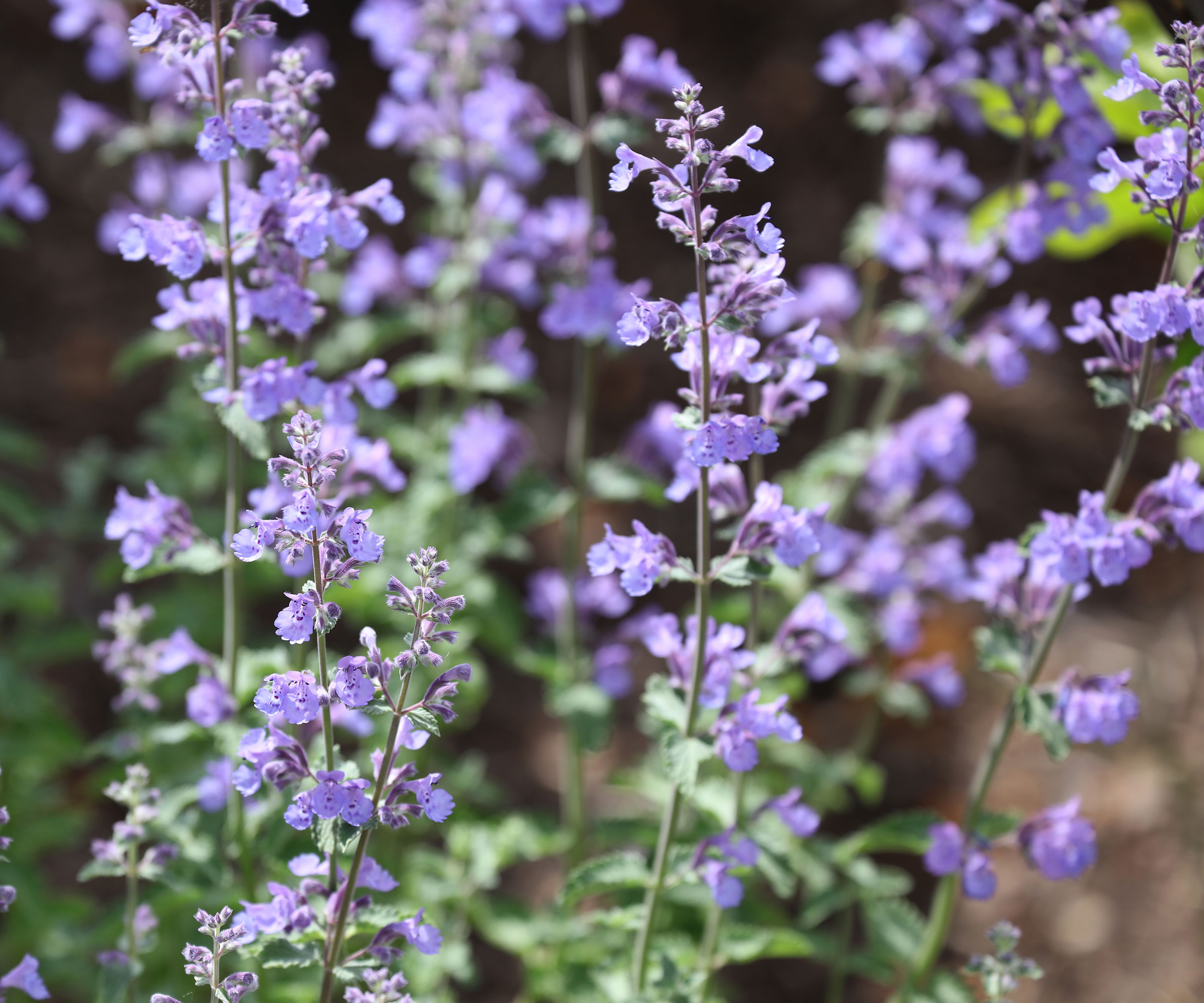
Nepeta catmint (Cat’s Pajamas) plants are true blue bloomers – deer-resistant perennials that bloom all summer long.
Nepeta can be grown in USDA zones 3-8 in full sun to partial shade. This drought and heat-tolerant perennial not only deters deer, but it attracts butterflies and hummingbirds with its long lasting indigo blooms.
You’ll find that caring for catmint is a relatively straightforward task. Nepeta does well on its own in the garden or in containers, and really wows when planted en masse.
5. Peony
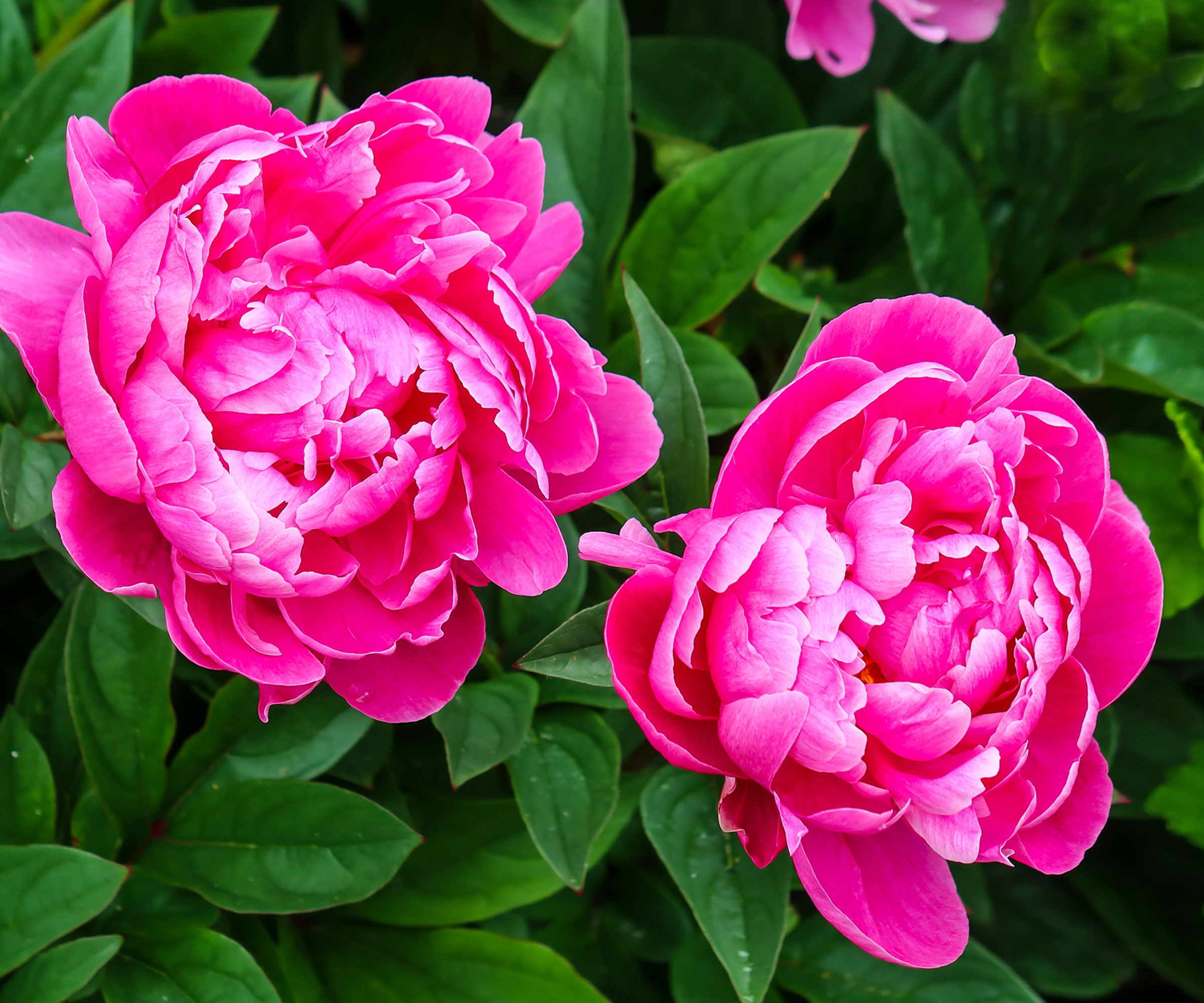
Peonies are notable for their stunning spring blooms, but did you know these delicate beauties are some of the most deer-resistant perennials you can grow in your garden?
Peonies like Karl Rosenfield and other cultivars can be grown in USDA zones 3-8 in full sun to partial shade. In bloom for four-six weeks, peonies are spurned by deer and rabbits, while being attractive to butterflies.
Gorgeous cut flowers, peonies can be planted alone in containers or en masse in beds or borders.
6. Orange Butterfly Weed

Orange butterfly weed (Asclepias tuberosa) is a species of milkweed which, as its name suggests, is extremely attractive to butterflies, but not deer.
It prefers sun to partial sun and, when mature, is drought tolerant.
You’ll find that growing butterfly weed results in large clusters of bright orange flowers in summer. It can be grown in USDA zones 3-9 in a variety of soils, provided they are moist but well-draining.
The striking blossoms give way to fluffy large seed pods which, if allowed to break free, can become invasive.
7. Jack-In-The-Pulpit

An incredibly unique looking plant, Jack-in-the-pulpit is a woodland flower (now cultivated) of North America.
The Jack is the columnar bloom or spadix of the plant, accompanied by the sheath or pulpit, followed by a cluster of red berries in late summer.
Only reaching a couple of inches (5cm), Jack-in-the-pulpit has the ability to change its sex, is pollinated by flies and gnats, and thrives in rich, medium-wet soil in partial or full shade. It can be grown in USDA zones 4-9a.
8. New England Aster

New England asters are late bloomers, enlivening the garden in late summer to early fall with their hot pink blooms.
Resistant to powdery mildew, asters are valuable plants for bees and butterflies but the deer aren’t interested in them. Asters can be grown in USDA zones 3-9 in moist but well-drained soil.
You can grow New England asters in sun to partial sun, where they are important nectar sources for migrating monarchs.
Expert Picks: More Perennials That Deer Avoid
Here are 7 more plants, recommended by landscape designer Lee Miller, that are excellent for creating a beautiful, deer-resistant garden.
9. Coreopsis

For a reliable and long-lasting bloom, coreopsis is a fantastic choice. Lee specifically points to one variety as a proven winner in her designs.
"I have found the 'Zagreb' variety to be an excellent 'deer-resistant' bloom that produces a full array of repeat blooms for many years in the garden," she says.
She notes that coreopsis is hardy in USDA zones 4-8, prefers full sun, and is drought-tolerant once established.
10. Salvia
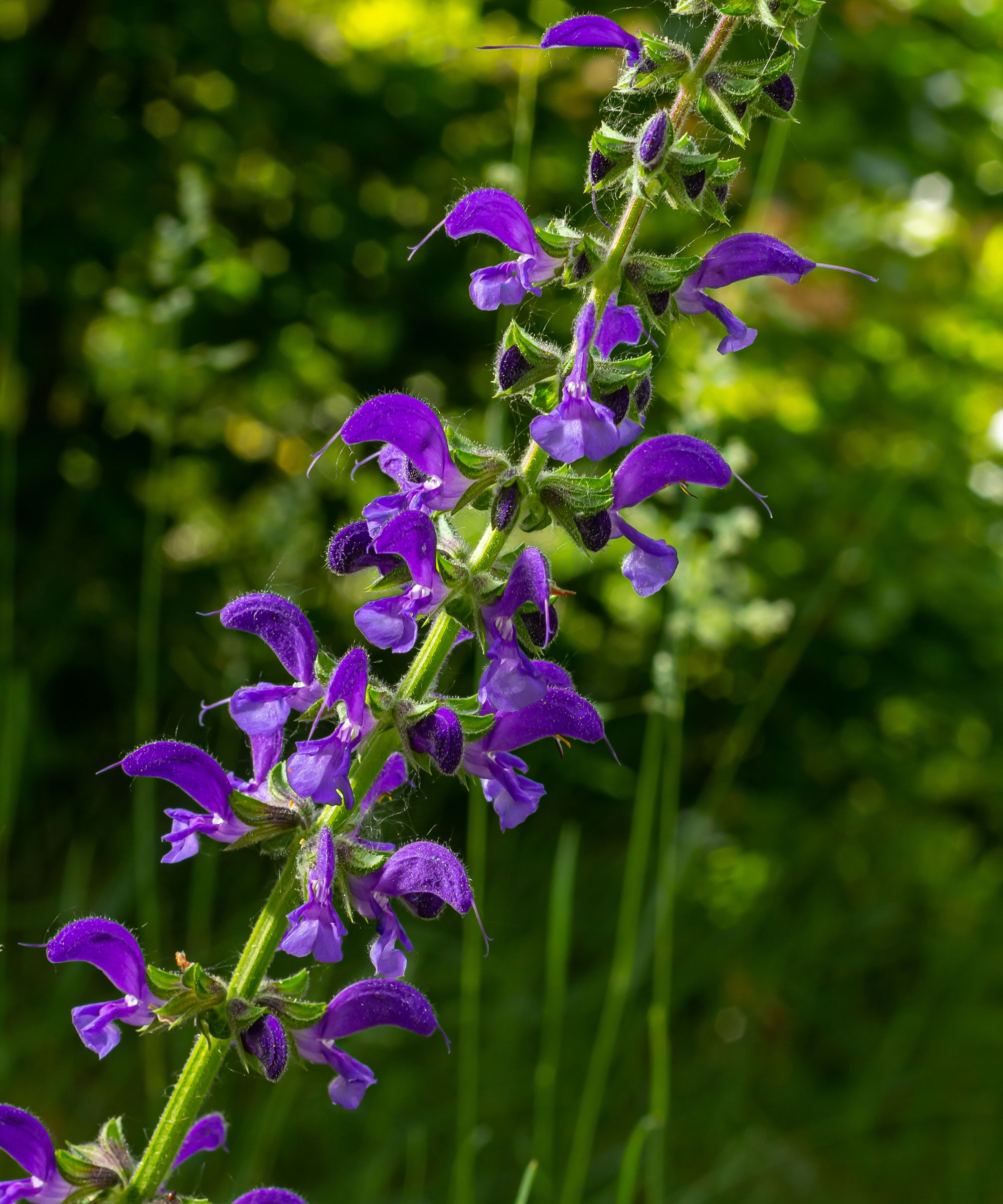
A favorite of Lee, salvia is a hardworking perennial that's also an attraction for butterflies.
"Salvia or sage... is 'deer resistant' and blooms throughout the summer with regular dead-heading," Miller says. She also points out the wide range of options, "from the 10-12-inch tall Salvia 'Marcus' to the 20-30-inch tall 'Caradonna' variety."
Hardy in USDA zones 4-8, Salvia thrives in full sun and well-drained soil.
11. Ornamental Grasses
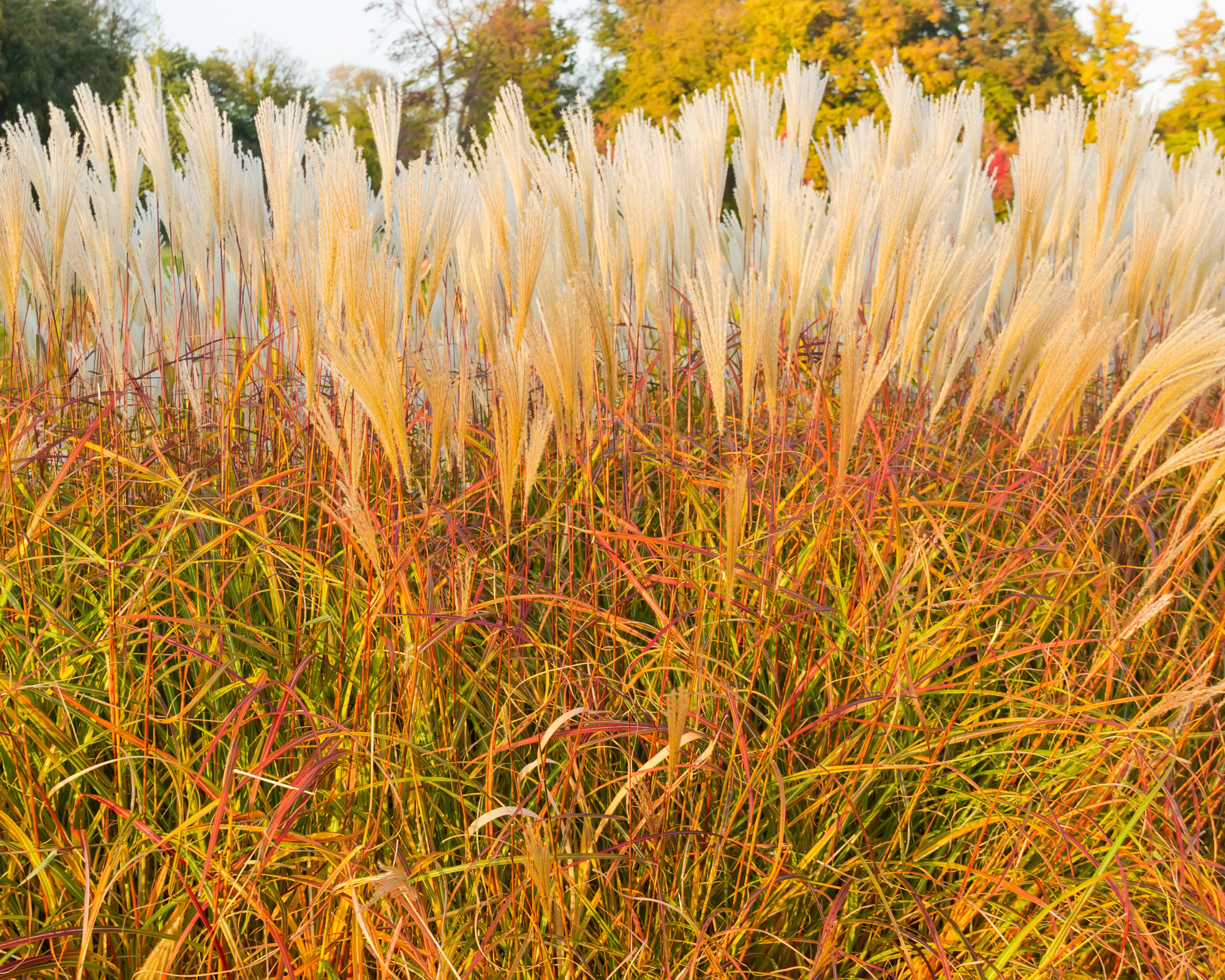
In addition to Japanese forest grass, many other ornamental grasses are ignored by deer. They add grace, movement, and four-season interest to the landscape.
Miller recommends several varieties: "Fountain grasses Pennisetum Alopecuroides 'Hameln' (2-3 feet) or 'Little Bunny' (1-2 feet) as well as the maiden grasses Miscanthus Sinensis 'Gracillimus' (5-8') or 'Morning Light' (4-5'), among others." These are generally hardy to USDA zones 5-9 and prefer full sun.
12. Ajuga

For a tough, deer-resistant groundcover, especially in shady areas, Miller suggests Ajuga.
"Ajuga (bugleweed) is a groundcover perennial hardy in USDA zones 3-10 that displays bluish-purple blooms in early spring on 4-6-inch tall plants," says Miller. "Ajuga thrives in partial to full shade and serves well as a massed planting under trees or in perennial borders."
13. Allium

If you have trouble with rodents as well as deer, Lee suggests allium for its impressive, globe-shaped flowers.
"If you have an issue with deer or rodents, alliums are an excellent addition, since they are looked upon as distasteful to the palate," she explains.
Hardy in USDA zones 4-9, alliums are easy-to-grow bulbs that are best planted in the fall for late spring or early summer blooms.
14. Lavender
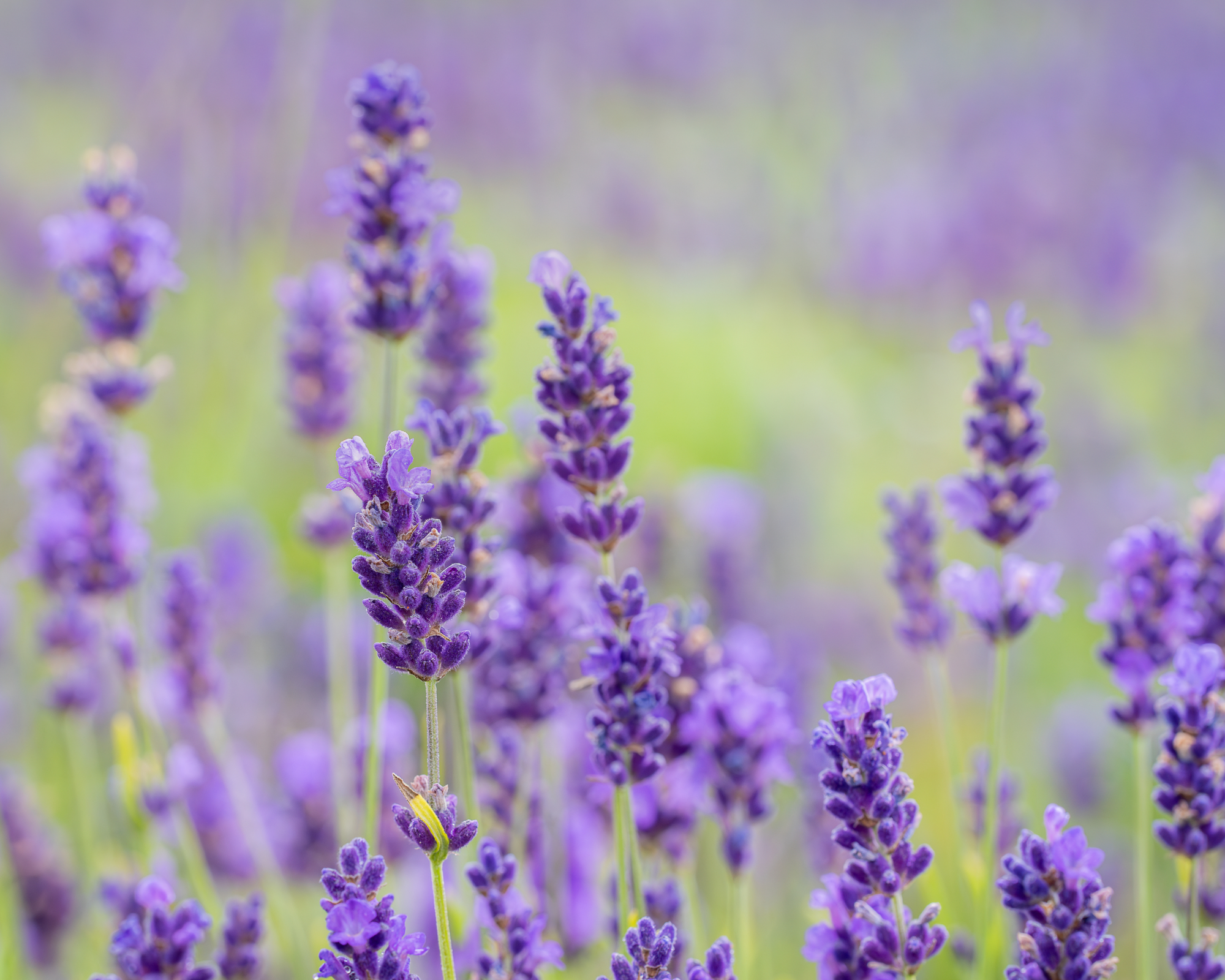
Well-known for its wonderful fragrance, lavender is a classic garden plant that deer simply can't stand.
"Lavender is a well-known aromatic herb... It is hardy in USDA zones 5-9 and requires full sun and a well-drained, moderately dry soil," Miller notes. "Lavender also is known to attract butterflies."
15. Lamb's Ear

The unique texture of lamb's ear makes it a great deer-resistant border plant. Deer tend to avoid fuzzy or "woolly" leaves.
Miller says, "Stachys (lamb's ear) is hardy in USDA zones 4-9 and displays silvery-white 'woolly' leaves with a velvety feel... The interesting foliage of Stachys remains throughout the winter and serves nicely as a border plant in a perennial garden."
As you plan your garden, it helps to know why deer avoid certain plants. I'll leave you with this great rule of thumb from landscape designer Lee Miller:
"Generally, the more aromatic and coarse the foliage, the more undesirable the plant will be to foragers."

Amy Grant has been gardening for 30 years and writing for 15. A professional chef and caterer, Amy's area of expertise is culinary gardening.
